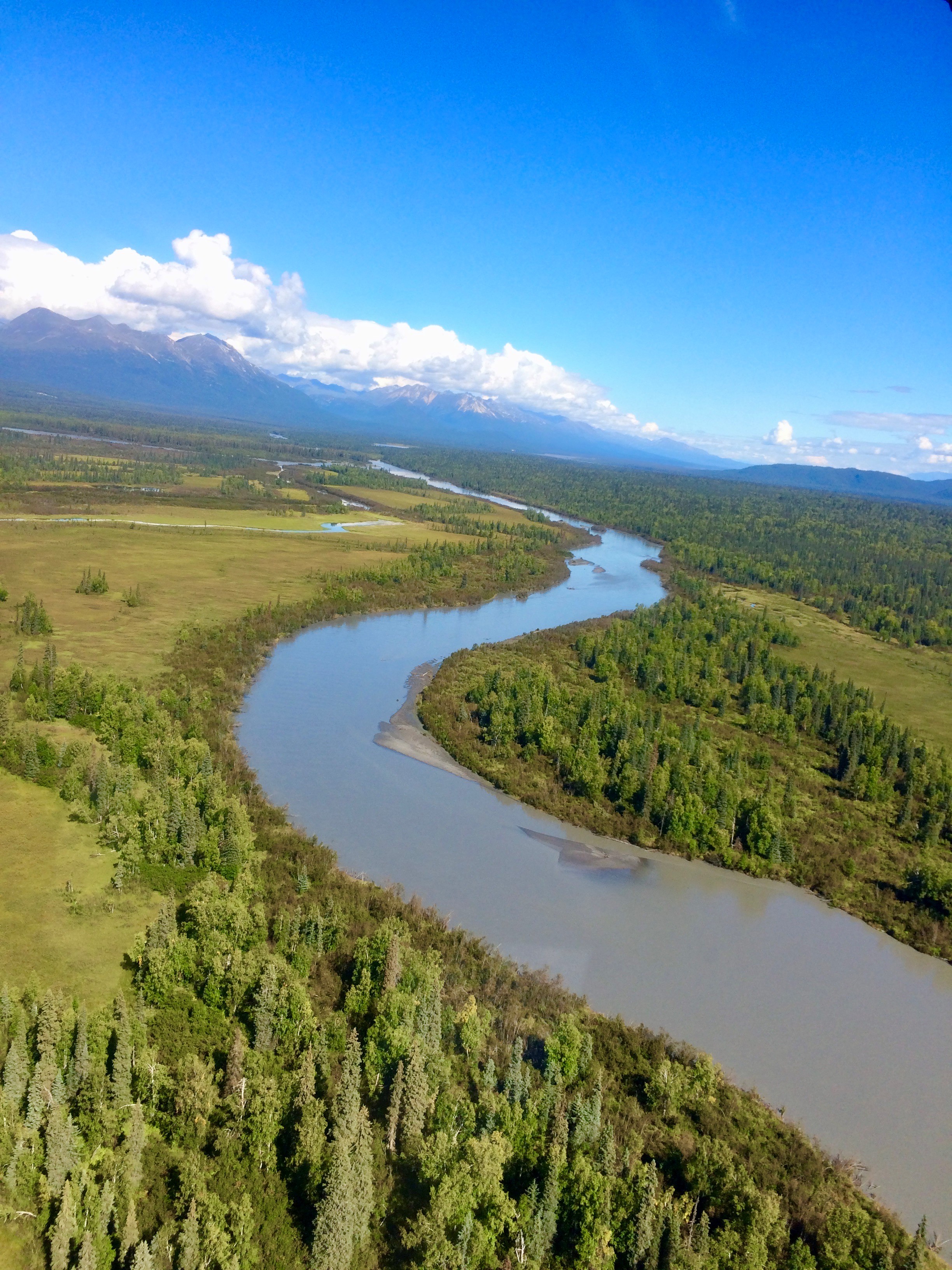
The historical distribution of Pacific Lamprey spanned the west coast of North America from the U.S./Mexico border through Alaska. While it is generally accepted that populations throughout this range have diminished in recent years, the extent of those declines is unclear because of the lack of understanding of their current distribution and abundance in certain regions, including the entire state of Alaska. Lack of awareness and understanding of distribution have been identified by the Pacific Lamprey Conservation Initiative (PLCI) as key threats to the protection and restoration of Pacific Lamprey and other native lamprey species across their historical range. This is especially true in Alaska.
Pacific Lamprey is a species of conservation concern in North America and is of particular interest in Alaska because this region marks the northern extent of its range. While the Susitna River drainage, a 504-km glacial river that discharges into Cook Inlet and the Gulf of Alaska, is the northernmost river system that is known to support a spawning population of Pacific Lamprey (Mecklenburg et al. 2002), the status and distribution of Pacific Lamprey populations is poorly documented, including the lower Susitna River tributaries where Pacific Lamprey have been reported to spawn as adults and rear as larvae. To address this data deficiency, with funding from PLCI/NFHP and USFWS, the University of Alaska Fairbanks and partners (including the Alaska Department of Fish & Game, Knik Tribe, and Susitna River Coalition) will assess the distribution and relative abundance of larval and adult Pacific Lamprey at multiple sites within the Susitna River Basin. This effort includes an examination of the rearing (larval) and spawning (adult) habitat use attributes of Pacific Lamprey, a determination of the size and age structure of larval and adult Pacific Lamprey, and use eDNA from collected water samples to detect the presence of Pacific Lamprey.
Human Interest/Community Benefit:
While there are reports of historically abundant lamprey populations by tribal communities in the region, there is little information or understanding as to why the lamprey populations appear to have declined. Due to the absence of subsistence and commercial fisheries for Pacific Lamprey in Alaska, this species has not been a management priority. As a result, limited monitoring and survey efforts have only recently (June 2019) been initiated in Susitna River tributaries. To date, there have been no comprehensive larval or adult Pacific Lamprey surveys conducted in the Alaska Regional Management Unit, making this effort a key step to improving baseline knowledge and ultimately addressing these declines.
The integration of Pacific Lamprey, and other native lamprey species, into conservation actions and restoration activities, has been identified as a top priority of PLCI – specifically of the Restoration Subgroup to the Lamprey Technical Workgroup. Although some populations are more vulnerable than others, Pacific Lamprey is increasingly at risk under high greenhouse gas scenarios. Without knowing more about their presence in the region, and in Alaska in particular, where the climate is changing especially quickly, impacts of climate change cannot be assessed or addressed. This adds increased importance to this work as biologists and resource managers work to better conserve and restore this species and will hopefully lead to similar efforts in other parts of the state.
Project Timeline:
June – July 2022 – Sampling efforts for larval and spawning adult Pacific Lamprey
June – July 2023 - Sampling efforts for larval and spawning adult Pacific Lamprey
Partners:
University of Alaska Fairbanks (project lead)
Alaska Department of Fish & Game
Knik Tribe
Susitna River Coalition
